Numerical Analysis of Convective Heat Transfer in Quenching Treatments of Boron Steel under Different Configurations of Immersed Water Jets and Its Effects on Microstructure
Abstract
:1. Introduction
2. Computational Domain
2.1. Governing Equations
2.2. Physical Modeling Employing PIV and Thermal Histories
- There is no heat transfer in the symmetry axis of the specimen, so it is considered an isolated boundary, as shown in Equation (6).
- The heat that arrives by conduction to the surface in contact with the fluid is transferred to the surroundings by forced convection, represented in Equation (7) by a global heat transfer coefficient h
3. Analysis and Discussion of Results
3.1. Validation
3.1.1. Dynamic Fluid Field
3.1.2. Thermal Field Validation
3.2. Fluid-Dynamic Fields
Angle Effect Analysis
3.3. Thermal Analysis
3.4. Boiling Curves
3.5. Effect of Stirring Velocity on Phase Transformation
4. Conclusions
- The fluid-dynamic field was satisfactorily validated using the PIV technique, as was the thermal behavior by calculating the transient coefficient h employing the inverse heat conduction method, this allowed our computational model to perform surface heat-flow calculations in the quenching process of steel parts by modifying the operating parameters such as impact angle and flow velocity.
- It was found that the correlation used in the software correctly resolves the heat transfer rate due to convective cooling since it takes into account the velocity with which the fluid impacts the piece, which avoids carrying out experiments for each condition.
- The jet angle of 60° generates greater heat extraction at high injection flows of ~33 l·min−1; this is due to the flow behavior since the orientation of the jet promotes high-impact velocities throughout the probe, capable of causing high-velocity gradients and which generate non-uniform cooling of the part, which would promote its cracking. On the other hand, at low water flows, the impact angle does not significantly affect heat transfer since, as could be observed, the heat-extraction rates remained similar.
- It was found in the physical tests that the transition from an agitation of 0 l·min−1 to one of 6 l·min−1 produced by the jets during quenching generates significant microstructural changes due to obtaining extraction rates of higher heat levels that promote the formation of bainite and martensite, inhibiting the formation of ferrite independently of the jet angle.
Author Contributions
Funding
Data Availability Statement
Acknowledgments
Conflicts of Interest
References
- Hernández-Morales, B.; Vergara-Hernández, H.J.; Solorio-Díaz, G. Fluid dynamics during forced convective quenching of flat-end cylindrical probes. In Proceedings of the 8th WSEAS International Conference on Fluid Mechanics, 8th WSEAS International Conference on Heat and Mass Transfer, Puerto Morelos, Mexico, 29–31 January 2011; pp. 135–141. [Google Scholar]
- Kumar, A.; Metwally, H.; Paingankar, H.; MacKenzie, S. Evaluation of flow uniformity around automotive pinion gears during quenching. In Proceedings of the 5th International Conference on Quenching and Control Distortion at 2007 European Conference on Heat Treatment, Berlin, Germany, 25–27 April 2007; pp. 1–8. [Google Scholar]
- Xia Wei, Y.; Jing Chuan, Z.; Dong, H.; Zhong Hong, L.; Zhi Sheng, N.; Yong, L. Optimum design of flow distribution in quenching tank for heat treatment of A357 aluminum alloy large complicated thin-wall workpieces by CFD simulation and ANN approach. Trans. Nonferrous Met. Soc. China 2013, 23, 1442–1451. [Google Scholar]
- Garwood, D.R.; Lucas, J.D.; Ward, J. Modeling of the flow distribution in an oil quench tank. JMEP 1992, 1, 781–788. [Google Scholar] [CrossRef]
- Chen, N.; Liao, B.; Pan, J.; Li, Q.; Gao, C. Improvement of the flow rate distribution in quench tank by measurement and computer simulation. Mater. Lett. 2006, 60, 1659–1664. [Google Scholar] [CrossRef]
- Bogh, N. Quench tank agitation design using flow modeling. In Proceeding of the International Heat Treating Conference: Equipment and Processes, Schaumburg, IL, USA, 18–20 April 1994; Totten, G.E., Wallis, R.A., Eds.; ASM International: Materials Park, OH, USA, 1994; pp. 51–54. [Google Scholar]
- Kernazhitskiy, S.L.; Recktenwald, G. Numerical modeling of a flow in a large quench tank. In Proceeding of the ASME 2004 Heat Transfer/Fluids Engineering Summer Conference, Charlotte, NC, USA, 11–15 July 2004; pp. 129–137. [Google Scholar]
- Halva, J.; Volley, J. Modeling the flow in a quench bath. Hut. Listy 1993, 48, 30–34. [Google Scholar]
- Xia Wei, Y.; Jing Chuan, Z.; Wen Ya, L. CFD-supported optimization of flow distribution in quench tank for heat treatment of A357 alloy large complicated components. Trans. Nonferrous Met. Soc. China 2015, 25, 3399–3409. [Google Scholar]
- Madireddi, S.; Nambudiripad-Krishnan, K.N.; Satyanarayana-Reddy, A.S. Numerical Analysis of Heat Transfer during Quenching Process. J. Int. Eng. India Ser. 2016, 99, 217–222. [Google Scholar] [CrossRef]
- Li, J.; Zhao, X.; Zhang, H.; Li, D. Numerical simulation of single–jet impact cooling and double-jet impact cooling of hot-rolled L-shaped steel based on multiphase flow model. Sci. Rep. 2024, 14, 4965. [Google Scholar] [CrossRef] [PubMed]
- Fátima-Gomes, D.; Parreiras-Tavares, R.; Martins-Braga, B. Mathematical model for the temperature profiles of steel pipes by water cooling rings. J. Mater. Res. Technol. 2019, 8, 1197–1202. [Google Scholar] [CrossRef]
- Kobayashi, K.; Haraguchi, Y.; Nakamura, O. Water Quenching CFD (Computational Fluid Dynamics) Simulation with Cylindrical Impinging Jets. Nippon. Steel Sumitomo Met. Tech. Rep. 2016, 401, 105–110. [Google Scholar]
- Liu, Z.; Jie, Y.; Li, S.; Nie, W.; Li, L.; Guan, W. Study on inhomogeneous cooling behavior of extruded profile with unequal and large thicknesses during quenching using thermo-mechanical coupling model. Trans. Nonferrous Met. Soc. China. 2020, 30, 1211–1226. [Google Scholar] [CrossRef]
- Rok, K.; Leopold, Š.; Matjaž, H.; Dongsheng, Z.; Bernhard, S.; David, G. Numerical simulation of inmersion quenching process for cast aluminium part at different pool temperatures. Appl. Therm. Eng. 2014, 65, 74–84. [Google Scholar]
- Bouaichaoui, Y.; Končar, B. Numerical and experimental investigation of convective flow boiling in vertical annulus using CFD code: Effect of mass flow rate and wall heat fluxes. Ann. Nucl. Energy 2023, 181, 109514. [Google Scholar] [CrossRef]
- Husain, S.; Altamush, M.; Ahmad, S. Effect of geometrical parameters on natural convection of water in a narrow annulus. Prog. Nucl. Energy 2019, 112, 146–161. [Google Scholar] [CrossRef]
- Coras, C.; Martín, E.B. Modeling and numerical simulation of the quenching heat treatment application to the industrial quenching of automotive spindles. In Advances on Links between Mathematics and Industry; Springer: Cham, Switzerland, 2021; Volume 15. [Google Scholar]
- Rauch, L.; Zalecki, W.; Kuziak, R.; Garbarz, B.; Raga, K.; Bzowski, K.; Pietrzyk, M. Numerical simulations of aircraft engine ring gear quenching by using mean field model of phase transformations in Pyroware steel 53. J. Aerosp. Eng. 2023, 36, 04023079. [Google Scholar] [CrossRef]
- Wang, J.; Yang, S.; Li, J.; Ju, D.; Li, X.; He, F.; Li, H.; Chen, Y. Mathematical simulation and experimental verification of carburizing quenching process based on multi-field coupling. Coatings 2021, 11, 1132. [Google Scholar] [CrossRef]
- Mehran, G.; Ali, A.R.; Abas, R. Heat transfer and uniformity enhancement in quenching process of multiple impinging jets with Newtonian and non-Newtonian quenchants. Int. J. Therm. Sci. 2019, 142, 220–232. [Google Scholar]
- Jiyuan, T.; Guan-Heng, Y.; Chaoqun, L. Computational Fluid Dynamics a Practical Approach, 3rd ed.; Butterworth-Heinemann: Oxford, UK, 2018; pp. 192–203. [Google Scholar]
- Muhammad, J.; Aqib, M.K.; Munish, K.G.; Mozammel, M.; Ning, H.; Liang, L.; Vinothkumar, S. Influence of CO2-snow and subzero MQL on thermal aspects in the machining of Ti-6Al-4V. Appl. Therm. Eng. 2020, 177, 115480. [Google Scholar]
- Muhammad, J.; Ning, H.; Wei, Z.; Liang, L.; Munish, K.G.; Murat, S.; Aqib, M.K.; Rupinder, S. Heat transfer efficiency of cryogenic-LN2 and CO2-snow and their application in the turning of Ti-6Al-4V. Int. J. Heat Mass Transf. 2021, 166, 120716. [Google Scholar]
- Beck, J.V. User’s Manual for CONTA: Program for Calculating Surface Heat Fluxes from Transient Temperature Inside Solids; Technical Report; United States Michigan State University: East Lansing, MI, USA, 1983. [Google Scholar]
- Beck, J.V.; Blackwell, B.; Haji-Sheikh, A. Comparison of some inverse heat conduction methods using experimental data. Int. J. Heat Mass Transf. 1996, 39, 3649–3657. [Google Scholar] [CrossRef]
- Hernandez-Morales, B.; Brimacombe, J.; Hawbolt, E. Application of inverse technique to determine heat transfer coefficients in heat-treating operations. J. Mater Eng. Perform 1992, 1, 763–771. [Google Scholar] [CrossRef]
- Farrera-Buenrostro, B.; Hernández-Bocanegra, C.A.; RamosBanderas, J.A.; Molina-Valdovinos, L.E.; López-Granados, N.M.; Vapalahti, S. Experimental study of the effect of the concentration of water/polyalkylene glycol solutions on heat transfer in steels subjected to quenching. Mater. Res. Express 2024, 11, 016515. [Google Scholar] [CrossRef]
- Zuckerman, N.; Lior, N. Impingement heat transfer: Correlations and numerical modeling. J. Heat Transf. 2005, 127, 544–552. [Google Scholar] [CrossRef]
- Canale, C.F.; Totten, G.E. Overview of distortion and residual stress due to quench processing part 1: Factors affecting quench distortion. Int. J. Mater. Prod. Technol. 2005, 33, 797–807. [Google Scholar] [CrossRef]
- Karwa, N. Experimental Study of Water Jet Impingement Cooling of Hot Steel plates. Doctoral Thesis, Darmstadt: Technische Universitat Darmstadt, Frankfurt, Germany, 2012. [Google Scholar]
- Li, X.; Xia, W.; Yang, K.; Dai, L.; Wang, F.; Xie, Q.; Cai, J. Quench cooling of steel plates by reciprocating moving water jet impingement. Exp. Therm. Fluid Sci. 2024, 153, 111127. [Google Scholar] [CrossRef]
- Babu, K.; Kumar, P. Mathematical modeling of surface heat flux during quenching. Metall. Mater. Trans. B. 2010, 41, 214–224. [Google Scholar] [CrossRef]

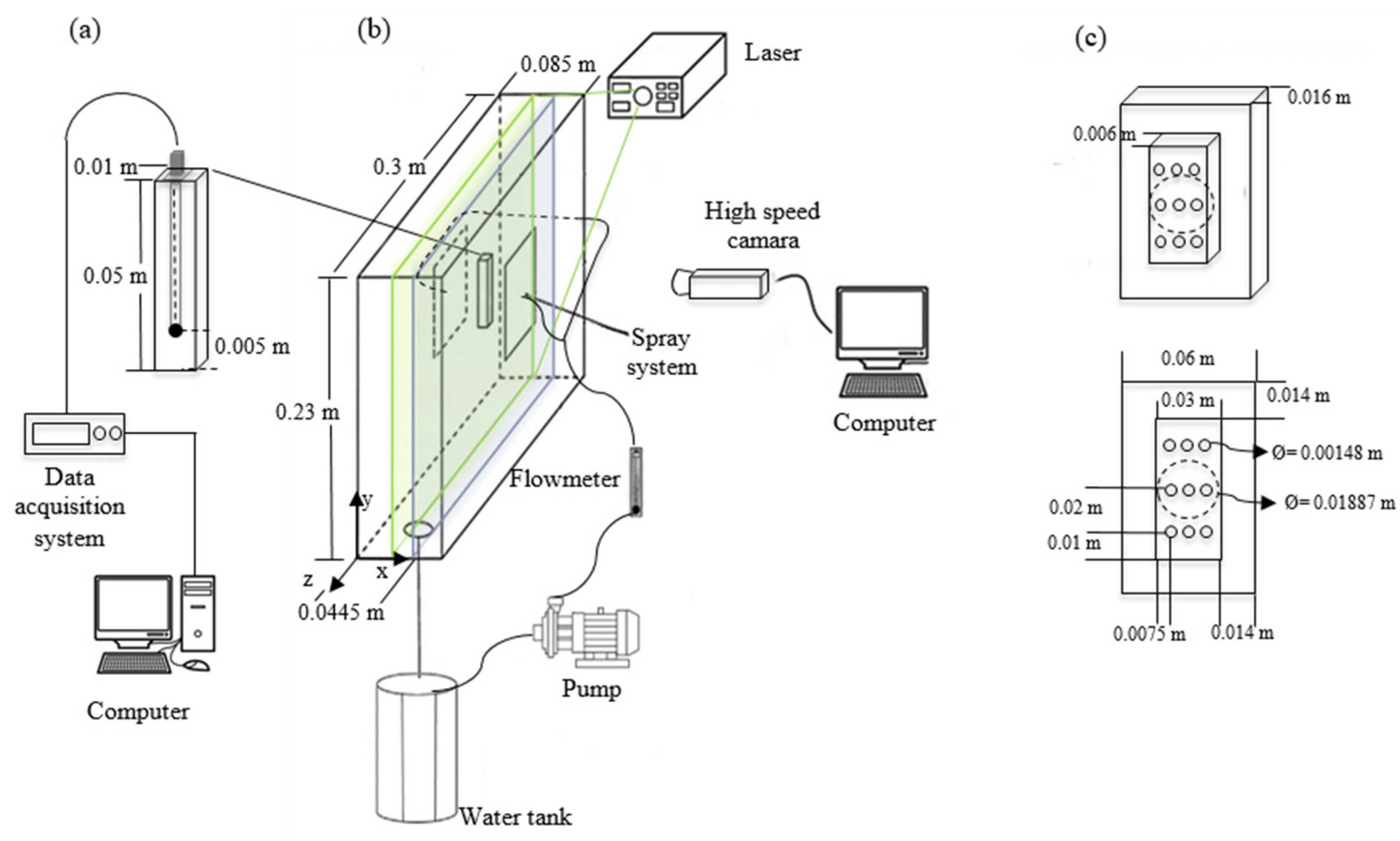
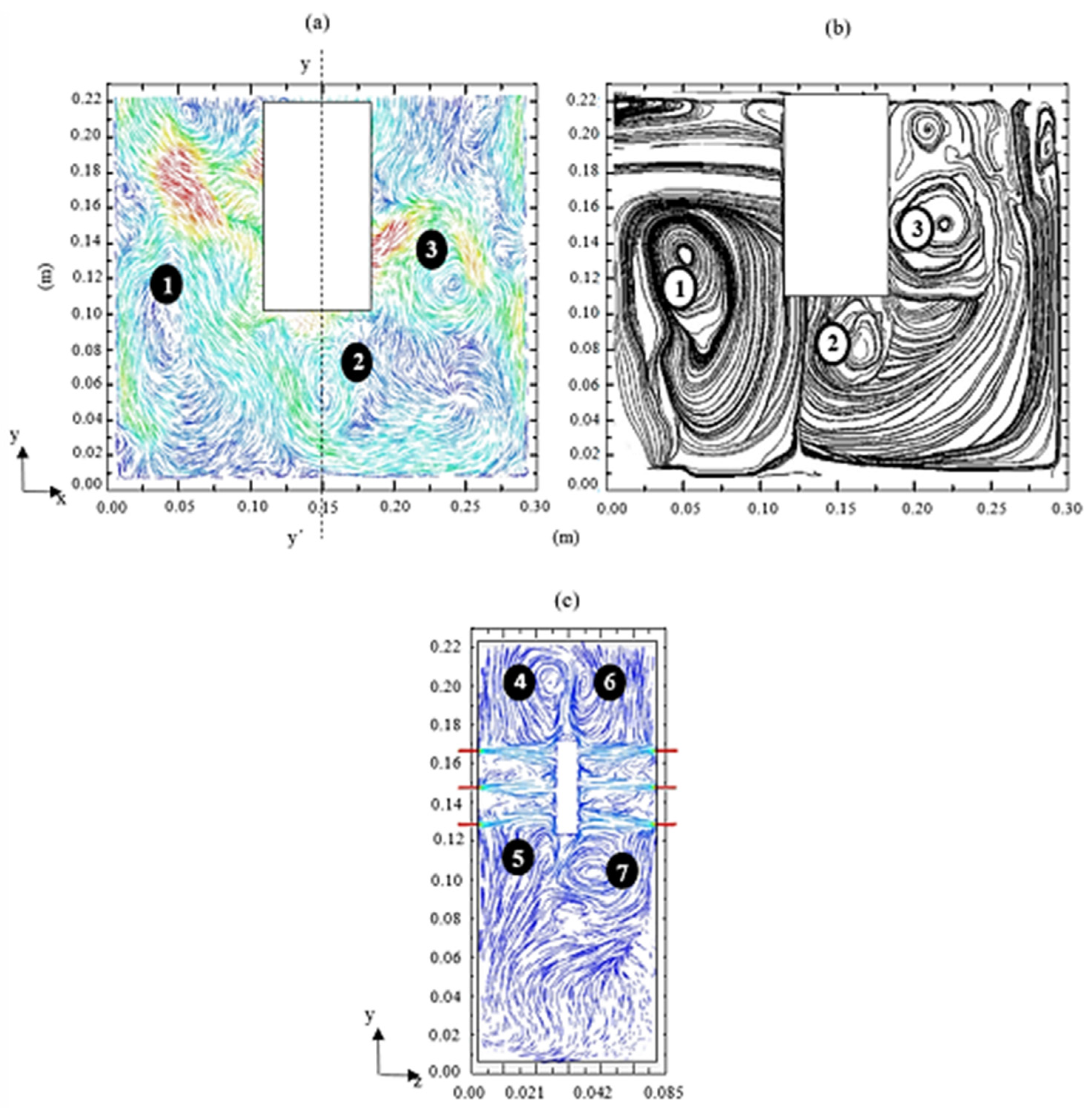

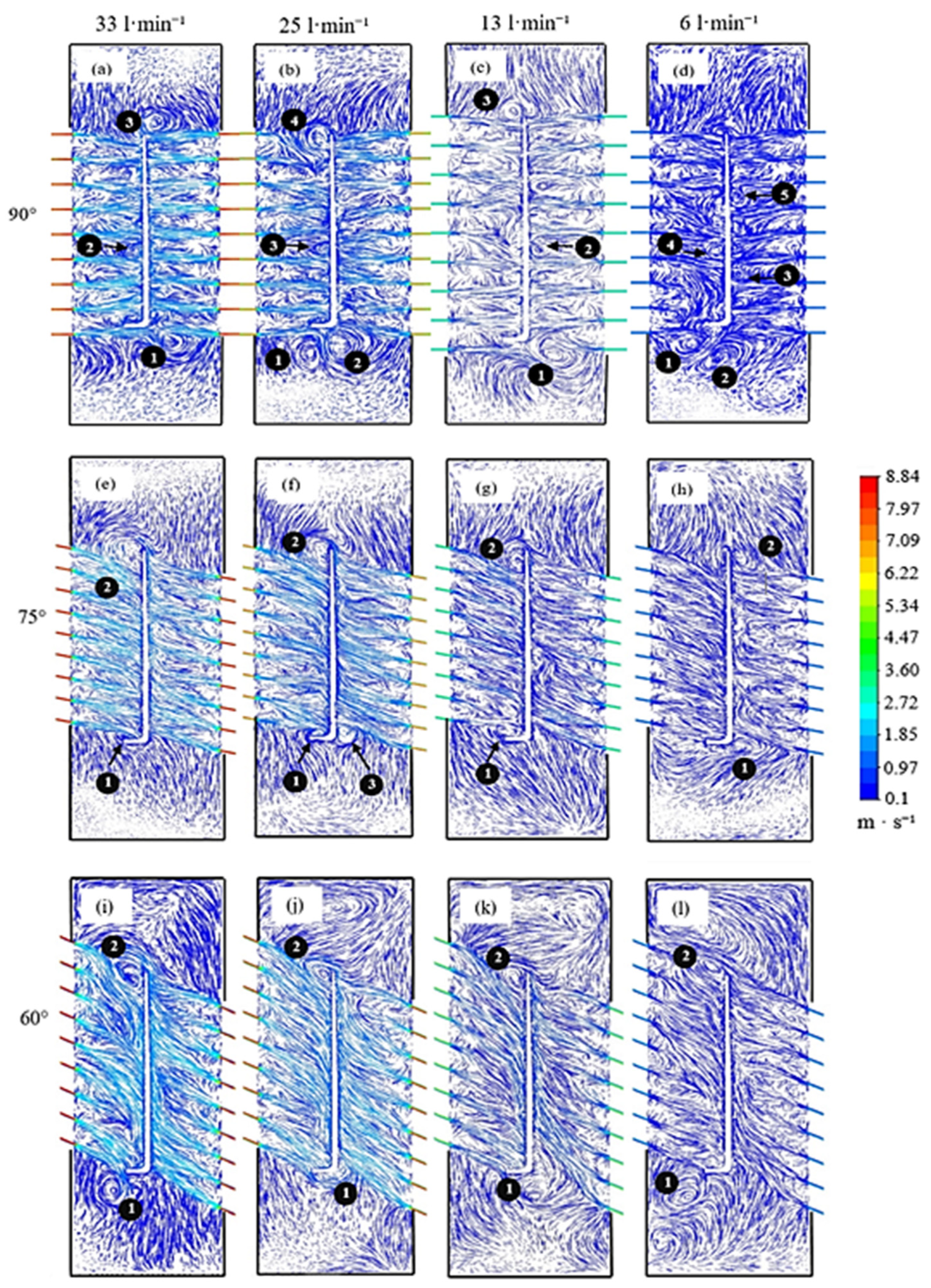


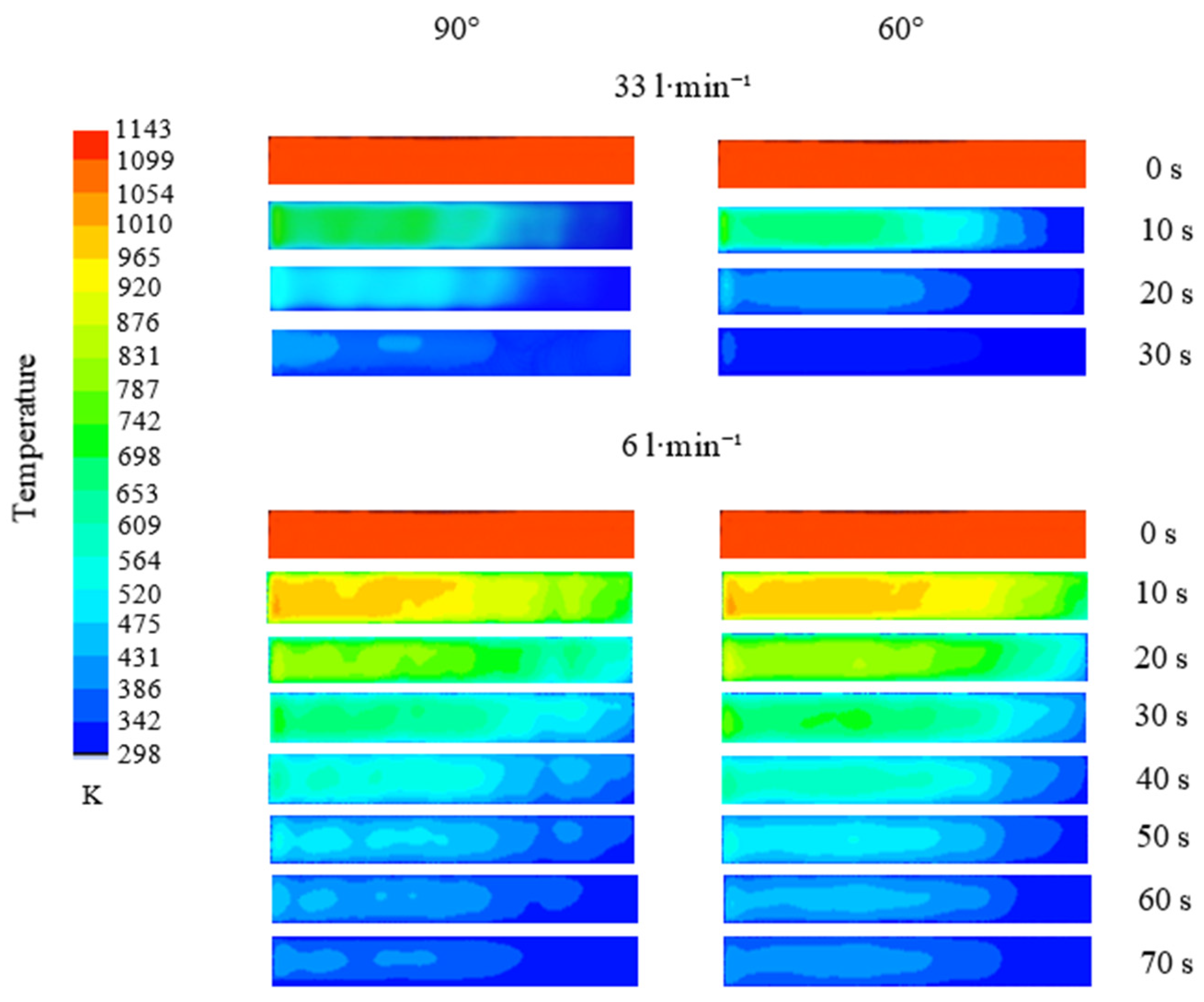

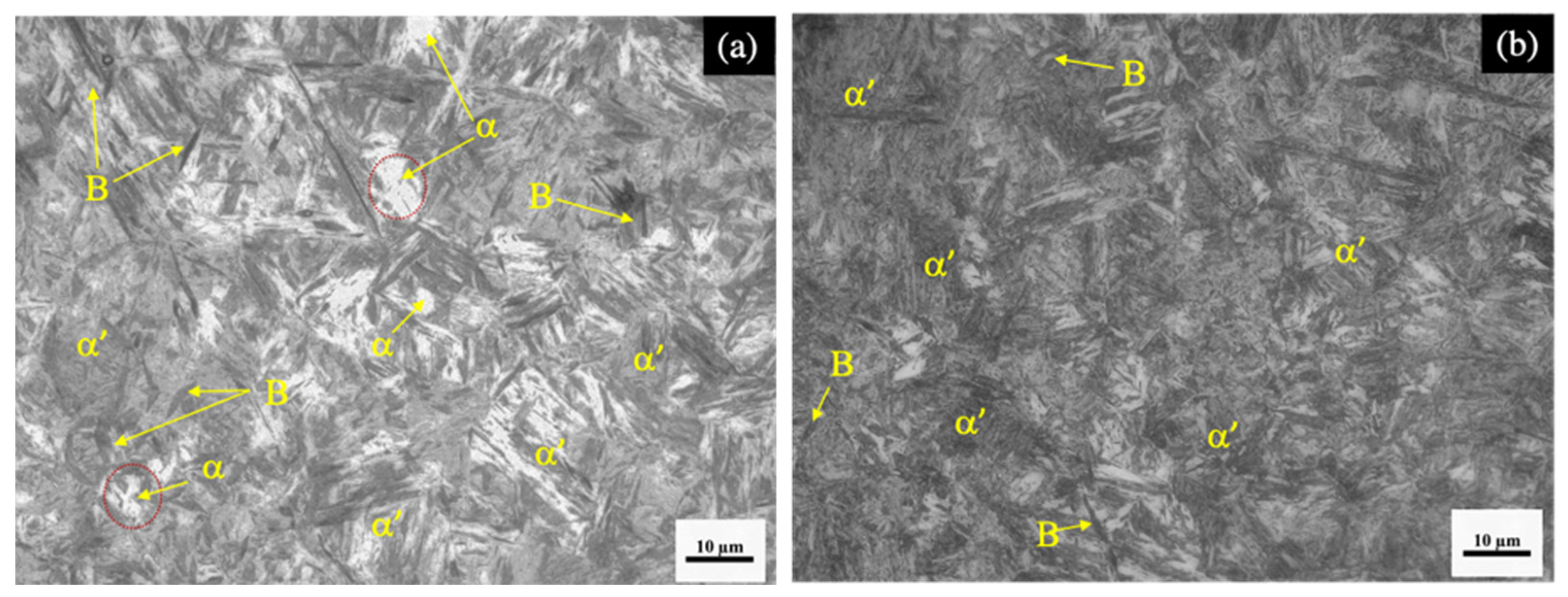
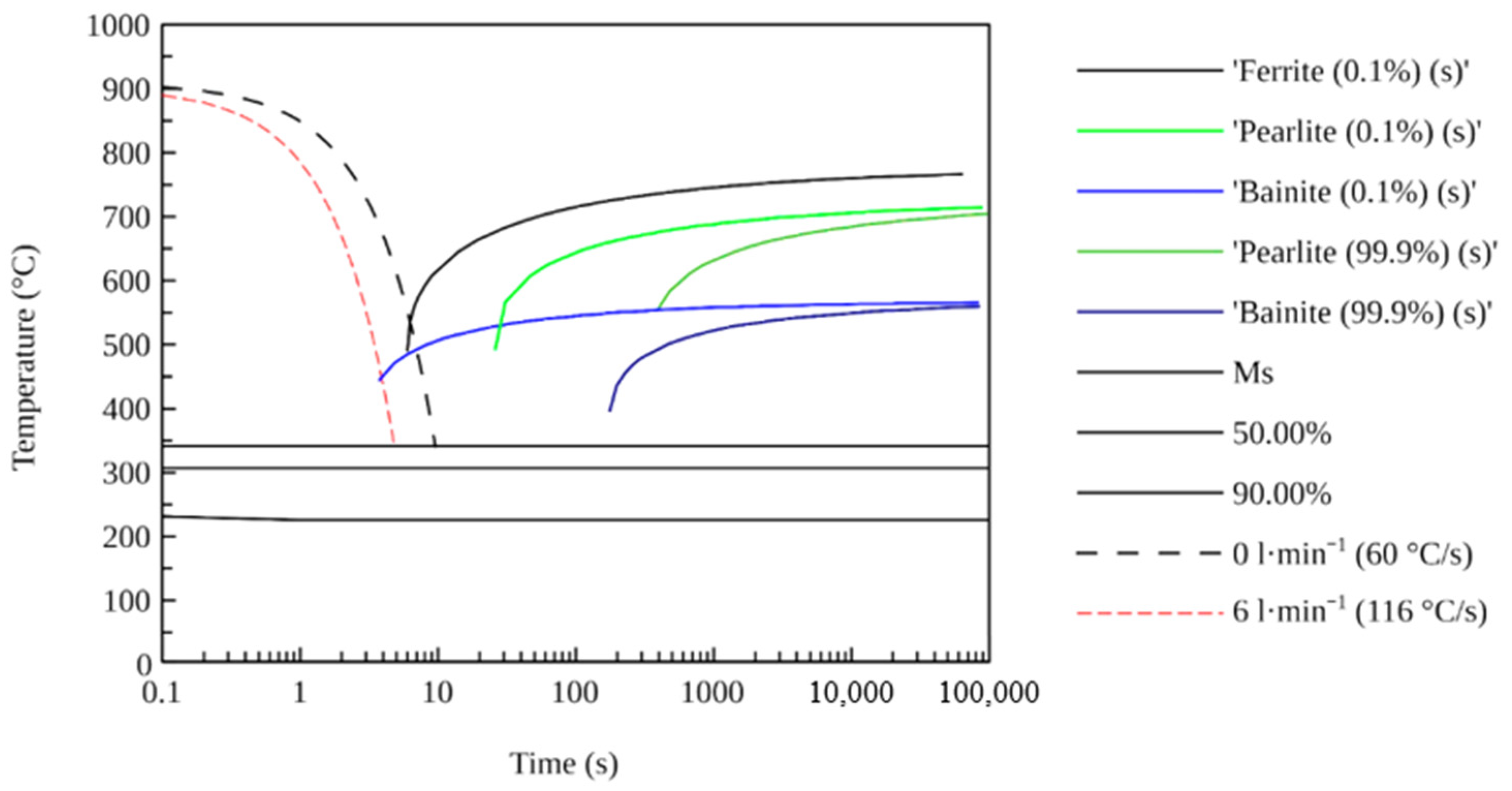
| Case | Angle | Flow, l·min−1 |
|---|---|---|
| 1 | 90° | 33 |
| 2 | 25 | |
| 3 | 13 | |
| 4 | 6 | |
| 5 | 75° | 33 |
| 6 | 25 | |
| 7 | 13 | |
| 8 | 6 | |
| 9 | 60° | 33 |
| 10 | 25 | |
| 11 | 13 | |
| 12 | 6 |
Disclaimer/Publisher’s Note: The statements, opinions and data contained in all publications are solely those of the individual author(s) and contributor(s) and not of MDPI and/or the editor(s). MDPI and/or the editor(s) disclaim responsibility for any injury to people or property resulting from any ideas, methods, instructions or products referred to in the content. |
© 2024 by the authors. Licensee MDPI, Basel, Switzerland. This article is an open access article distributed under the terms and conditions of the Creative Commons Attribution (CC BY) license (https://creativecommons.org/licenses/by/4.0/).
Share and Cite
Tinajero-Álvarez, R.A.; Hernández-Bocanegra, C.A.; Ramos-Banderas, J.Á.; López-Granados, N.M.; Farrera-Buenrostro, B.; Torres-Alonso, E.; Solorio-Díaz, G. Numerical Analysis of Convective Heat Transfer in Quenching Treatments of Boron Steel under Different Configurations of Immersed Water Jets and Its Effects on Microstructure. Fluids 2024, 9, 89. https://doi.org/10.3390/fluids9040089
Tinajero-Álvarez RA, Hernández-Bocanegra CA, Ramos-Banderas JÁ, López-Granados NM, Farrera-Buenrostro B, Torres-Alonso E, Solorio-Díaz G. Numerical Analysis of Convective Heat Transfer in Quenching Treatments of Boron Steel under Different Configurations of Immersed Water Jets and Its Effects on Microstructure. Fluids. 2024; 9(4):89. https://doi.org/10.3390/fluids9040089
Chicago/Turabian StyleTinajero-Álvarez, Raúl Alberto, Constantin Alberto Hernández-Bocanegra, José Ángel Ramos-Banderas, Nancy Margarita López-Granados, Brandon Farrera-Buenrostro, Enrique Torres-Alonso, and Gildardo Solorio-Díaz. 2024. "Numerical Analysis of Convective Heat Transfer in Quenching Treatments of Boron Steel under Different Configurations of Immersed Water Jets and Its Effects on Microstructure" Fluids 9, no. 4: 89. https://doi.org/10.3390/fluids9040089
APA StyleTinajero-Álvarez, R. A., Hernández-Bocanegra, C. A., Ramos-Banderas, J. Á., López-Granados, N. M., Farrera-Buenrostro, B., Torres-Alonso, E., & Solorio-Díaz, G. (2024). Numerical Analysis of Convective Heat Transfer in Quenching Treatments of Boron Steel under Different Configurations of Immersed Water Jets and Its Effects on Microstructure. Fluids, 9(4), 89. https://doi.org/10.3390/fluids9040089









